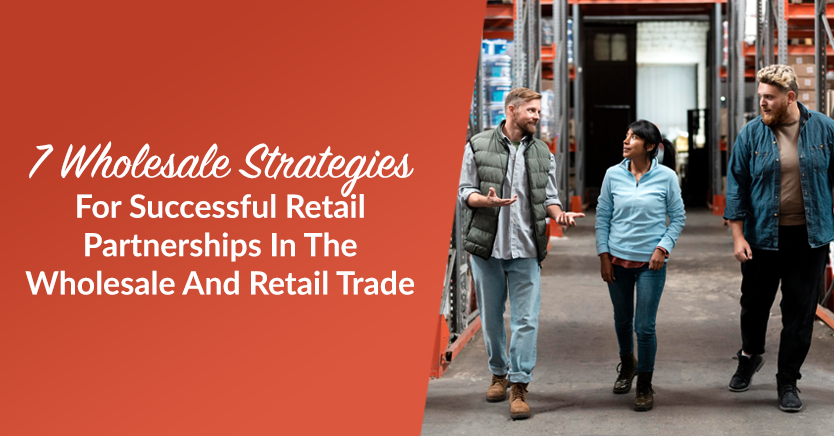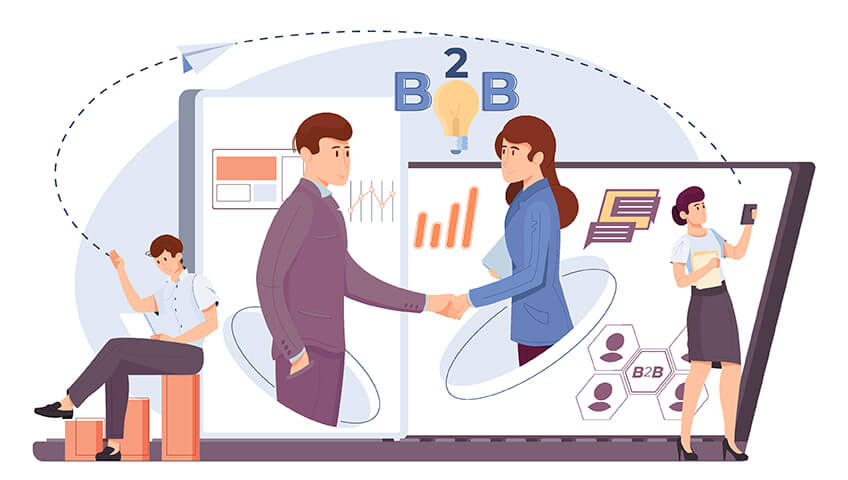
Are you planning to engage in the wholesale and retail trade by selling your products to retailers? Then it’s crucial to understand the dynamics of the relationship between wholesalers and retailers.
For starters, you’ll have to devise secure strategies that not only attract wholesale buyers but also encourage repeat business and customer referrals.
Furthermore, you’ll need to have representatives who can ensure the satisfaction of your retail buyers and facilitate mutually beneficial deals. While offering special incentives to new wholesale buyers is common practice, it’s equally important to allow room for negotiation to make your retailers feel appreciated.
In today’s post, we’ll discuss the factors that wholesalers should consider to foster successful relationships with their wholesale buyers. So let’s jump right into it!

7 Major Factors To Consider To Enjoy Wholesale And Retail Trade Success
Below, we discuss the seven major factors that someone in the wholesale and retail trade needs to consider to cultivate a mutually beneficial relationship with their retailers.
1. Return policies
In the excitement of receiving a significant order from a potential retail customer, it’s easy to overlook important details like the return process for damaged, outdated, or unsold goods. This can be detrimental to anyone wishing to make it big in the wholesale and retail trade.
Therefore, establish clear guidelines that outline the circumstances under which goods can be returned. For example, what happens if a wholesale buyer discovers defects after signing for the delivery? Setting comprehensive return policies helps maintain a good working relationship with retailers.

2. Delivery
When retailers purchase goods in bulk, it’s essential to have an efficient delivery system in place. Consider various delivery options that align with both your and your buyer’s requirements. Additionally, include a clause specifying the estimated delivery time from the purchase.
Some common delivery options in the wholesale and retail trade include:
- Freight On Board Destination: The wholesaler covers shipping costs and assumes responsibility for the goods until they reach the retailer’s store.
- Customer Arranged Pickup: The buyer arranges transportation and assumes responsibility for the goods once they are picked up from the warehouse.
- Freight On Board Shipping: The buyer pays for shipping costs and assumes responsibility for the goods after they change hands.
- Freight On Board: The wholesaler and buyer agree on who covers transportation costs and when the responsibility for the goods shifts from the wholesaler to the buyer.
3. Advertising restrictions
For your wholesale and retail trade to go places, you need to establish advertising restrictions with your retailers.
Therefore, clearly communicate limitations on the use of your business logo or ad placements by retailers. For example, you should tell them how long and when they can use such resources in their own promotions.
So, what happens when you ensure that your retailers are aware of these restrictions? You avoid misunderstandings, protect your brand, and prevent the unauthorized use of your business assets for the benefit of other businesses.

4. Placement and cancelation of orders
As a wholesaler, you need to clearly define the processes for the placement and cancelation of orders.
Establish streamlined procedures for your retailers. For one thing, you can allow them to place orders via phone during specific hours. For another, you can give them access to your online portfolio so that they can use the platform to place orders at their convenience.
Once you’ve set your processes for making and canceling orders, ensure that you stick to them. For example, if you allow your customers to place orders via your online portal, respond to their queries and comments within 24 hours.
5. Pricing
Knowing how to set the ideal pricing is a skill anyone in the wholesale and retail trade must master.
When setting prices for your goods, consider the cost incurred during the procurement process as well as the market demand for said goods. Set prices within a range that allows for negotiation, enabling discounts without compromising profitability.
Set a price that allows your client to make a profit when reselling your goods. True, there are many ways to determine how much to sell your items for. However, ensure your pricing remains competitive in the market without overpricing your products.

6. Offer advice
Retail sellers are always seeking ways to enhance their business. Therefore, to establish a loyal customer base, provide regular advice to your retailers on how to improve their business and increase sales.
By freely sharing great business ideas with your clients, you can attract and retain customers. As a result, you foster a positive impact on your own business. After all, loyal customers play a pivotal role in your success in the wholesale and retail trade.
7. Make your retailers feel good
It is commonly said that laughter is great for general health. If you cheer up your clients every time they visit your warehouse or store, you can encourage them to do business with you more often. In other words, uplifting retailers’ spirits can significantly impact their loyalty.
In addition, consider introducing new elements regularly to keep your establishment fresh and exciting. This can motivate customers to return frequently. Remember: the element of surprise will make your store unpredictable, fostering anticipation and excitement for each visit.

Conclusion
When it comes to the wholesale and retail trade, establishing a successful relationship between your retailers and yourself as the wholesaler requires careful consideration of the following factors:
- Clear return policies
- Efficient delivery systems
- Advertising restrictions
- Streamlined order processes
- Competitive pricing
- Offering of valuable advice
- Creating a positive experience for retailers
By prioritizing these factors, you can attract and retain retail customers, fostering a mutually beneficial partnership in the wholesale and retail trade.
Do you have any questions about the topic discussed in today’s article? If so, let us know in the comments section below!



